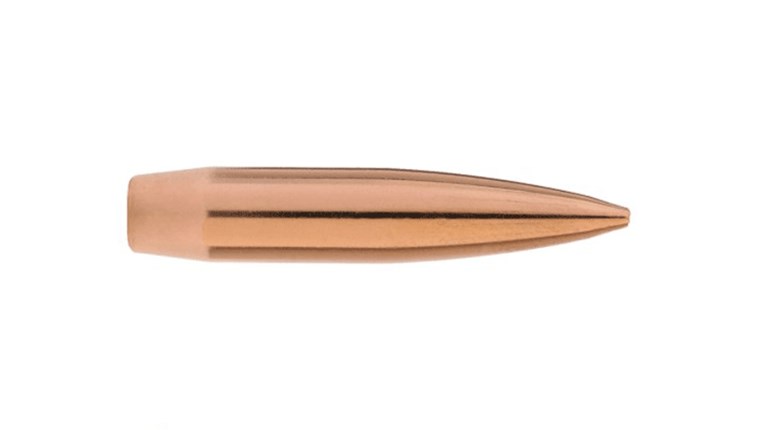One morning last November I found big deer prints in the snow. Presently I came upon the buck and killed him with my .243. Exactly 100 years earlier, another hunter had fired at a much bigger deer. What followed became one of the strangest hunting tales of all time…
Friday, November 20, 1914, dawned cold over Wisconsin's Yellow River. A thick carpet of new snow greeted James Jordan as he and hunting pal Eachus Davis set out from Danbury, walking the Soo Line rail across the bridge. Davis, a decade older than the 22-year-old Jordan, had neglected to buy a 50-cent deer license. As the men approached Round Lake, he found he'd also forgotten a knife. Deer tracks in lake-side aspens included one big set with "a lazy hoof." Soon the hunters spied a doe, which Jordan killed with one of the five rounds in his magazine. He loaned his knife to Davis, who field-dressed the deer. Jordan kept hunting, trailing the buck north toward Danbury.
Near the bridge, the tracks led into tall grass and weeds beside the rail's raised bed. Just then, a train approached from the south. At the locomotive's whistle, several whitetails sprang up 50 yards from Jordan. He fired three times at the enormous buck. Jordan's only rifle, a .25-20, fired a bullet not much lighter than the 95-grain missile in my .243 a century later. But his 86-grain softnose clocked only 1,460 fps at the muzzle. Its payload of 405 foot-pounds is only a fourth that of the .243's. With one cartridge to finish the deer, Jordan again took the track. He finally got a clear look at the buck across the river. It fell to his shot. He waded the icy, waist-deep water but had no way to gut or move the animal, so he trudged to town, changed clothes and enlisted Eachus and his two sons and the use of a wagon.
Returning to water's edge, Jordan couldn't find the deer! After frantic searching, the men spied it hung up in brush 200 yards downstream, where the river had washed it.
Back in Danbury, the buck caused quite a stir. It weighed, by local estimates, around 400 pounds. Its rack astounded even veteran hunters. Among those who came to ogle the deer was taxidermist George Van Castle from Webster, 10 miles away. He offered a shoulder mount for $5. Jordan paid on the spot.
But Van Castle's wife was ailing. To get her better medical care, he moved to Grindstone Lake, near Hinckley, Minnesota. When, months later, Jim Jordan went to Webster to retrieve his deer, he found no sign of it or the taxidermist. And he didn't have the time for a two-day buggy ride across the St. Croix.
Van Castle lost his wife. Within three years he remarried and moved to Florida. His Grindstone Lake house would stand vacant 40 years, selling for taxes in 1959. That year, Minnesota DNR forester Bob Ludwig found in a second-hand store a crude mount of an enormous whitetail. He bought it for $2. Months later, he sent for a Boone and Crockett score sheet and measured the antlers, then sent the tally to B&C measurer Bob Fashingbauer in St. Paul. Assuming Ludwig had erred, Fashingbauer visited to tape the buck himself. His net score came in just a half-inch shy of Ludwig's. An eye-popping 206 1/8, it was a new world's record!
By this time, Jim Jordan and his wife Lena had moved to Minnesota and ran a bar atop Crooked Creek Hill on Highway 48 near St. Croix. Bob Ludwig, it turned out, was related by marriage to Jordan. And when Ludwig spread the news of Fashingbauer's score, Jordan invited him to show the antlers at his bar. When he saw them, he immediately identified them as those of the deer he'd killed 35 years earlier. But Ludwig was the legal owner and had no intention of giving them up. Jordan, a renowned story-teller, had his supporters; but many doubted his tale. In 1965 the Boone and Crockett Club listed the deer as the new world-record typical whitetail – shot by an "unknown" hunter.
Ludwig soon got cash offers for the antlers. In 1968 he sold them for $1,500 to a New Hampshire dentist. But Jordan's insistence that he'd shot the deer kept the debate about its origins alive. In 1977 Ron Schara, Star Tribune outdoors writer from the Twin Cities, visited the bar on Crooked Creek Hill. While at 85 Jim Jordan was losing his memory, Lena's was still keen. Fashingbauer, meanwhile, was conducting his own interviews. In December, 1978, B&C concluded that the weight of evidence favored Jim Jordan's claim. The listing was changed to show the buck as having been killed by Jordan in Wisconsin, not by an unknown hunter near Sandstone, Minnesota.
Ironically, James Jordan had died two months before that change.
Bass Pro Shops acquired the Jordan antlers in 2001 for an undisclosed sum – reportedly well into six figures.
This extraordinary whitetail would hold top spot in the B&C records book until 1993, when Milo Hanson downed a buck scoring 213 5/8 near Biggar, Saskatchewan. But no tale in the annals of hunting will likely ever trump that of the deer killed by a young James Jordan with the last round in his .25-20 a century ago, in the first year of the Great War.





































